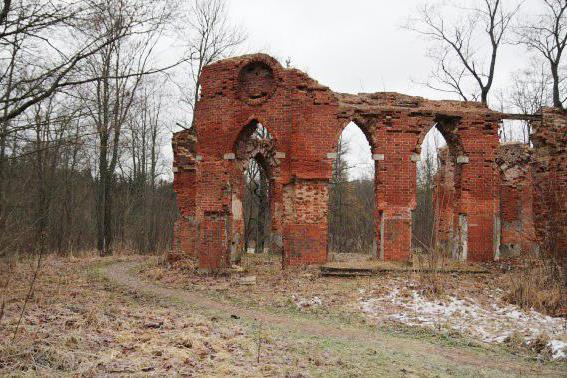In the summer months, the city of Pushkin resembles a real green oasis. Residential houses are surrounded by squares and blooming flower beds. In this small town there are also several fairly large comfortable recreation areas, and one of them is Babolovsky Park, about which there are many interesting stories and legends.
History of Babolovo Manor
Prince G. A. Potemkin was a favorite of Catherine II and one of the most beloved, since he actively participated in the plot of 1762, after which the Empress came to power. The history of the palace in Babolovo begins in 1783. Catherine II never spared gifts for her loved ones, and this residence became one of the royal presents to Count Potemkin. The first house built in Babolovskaya Manor was wooden, but after 5 years a stone mansion was erected in its place. The summer residence was relatively small, characterized by an asymmetric layout, and thanks to the Gothic design of the facade, it soon became known as the palace. In the central, largest room, was a marble bathtub for swimming in the summer.
Granite bath in Babolovo
Despite its beauty and originality, the Gothic palace was not very popular. Due to the lack of constant attention and care, the building is dilapidated, and already in 1791 the residence does not look very presentable. The architect V.P. Stasov undertakes the reconstruction of the palace in 1824. The oval room is expanded, and the marble bath is changed to an incredible-sized bathtub made of granite monolith. Looking ahead, it should be said that the Tsar Bath in Babolovsky Park has survived to this day. This incredible bath was created by the then-famous master Samson Sukhanov. A bath was carved out of a block of red granite interspersed with a greenish shade labrador with a total weight of more than 160 tons. The dimensions of the finished bathhouse are amazing: the depth is 152 cm, the height is 196 cm, and the diameter is 533 cm. An interesting fact is that a huge bath was originally installed, and after that a room was built around it.

Legends of the Tsar Bath and the Palace in Babolovo
In the first half of the nineteenth century, granite baths were ordered and installed in their homes by many members of the royal family and simply very wealthy people. However, the royal bath in Babolovsky Park, installed in the palace, originally built for Count Potemkin, was unusual due to its size. The bathhouse impressed even noble people who saw it for the first time. Gradually, legends began to form about the granite basin. There were rumors that Catherine II bathed in it in goat milk. Some sources also have information that the future emperor Alexander I was baptized in Tsar-Vann. They also say that the bathhouse was used for love pleasures and for occult purposes. During World War II, the Germans saw the Tsar Bath and wanted to take her to Germany, but they could not think of a way to move a heavy bowl carved from granite.
The fate of the palace today
The last full owner of the palace and park complex in Babolovo was Alexander I. The further fate of the Gothic palace with the Tsar-bath is not so rosy. Babolovsky Park and all the buildings located on its territory were badly damaged during the Great Patriotic War. Many trees were cut down, and the palace turned into miserable ruins. After the war, the recreation area was partially cleared and ennobled. Nobody was engaged in the restoration of the palace. The abandoned walls of the once magnificent and luxurious residence dilapidated more, but through the ruined arched windows one could still see the magnificent bathhouse.
Modern Babolovsky park
Today, the recreation area resembles a mixed forest. At the moment, the park occupies about 30 hectares. Today it is a groomed forest and meadows with paths and few attractions. There are no cafes or attractions, moreover, even the benches can be counted on the fingers. However, this corner of nature is quite popular among residents and tourists. Many visitors are interested in the ruins of the palace and the granite bath in Babolovsky Park. However, today what remains of the central building of the complex is surrounded by a high fence, and it is not so easy to look at the royal bathhouse. There are some other outstanding buildings on the territory of the recreation area. For example, the Pink Guardhouse, located immediately at the entrance to the park, the water tower (1887), a concrete pillbox built during the war. Less interesting “sights” are concrete houses, where security guards once lived, and the Izhora factory boarding house, built in 1970. It is possible that soon the palace will be restored, or another modern hotel or SPA center will appear in its place.

How to get to the park with a king bath?
Babolovsky Park is one of the least known in Pushkin. Often, even the indigenous inhabitants of St. Petersburg only indirectly know the legends of the Tsar Bath, but they have no idea where this attraction is located. If you decide to see with your own eyes the ruins left over from past greatness, you need to get to the city of Pushkin. Where exactly is Babolovsky Park, how to get to it? From the railway station or the Catherine’s Palace can be reached by buses No. 188 and No. 273. You must exit at the stop "Starogatchinskoe highway." On foot you can walk along Parkovaya Street along the Catherine Park.